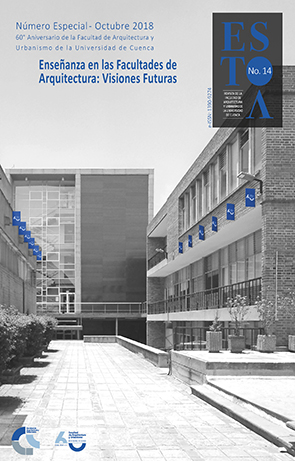Intertwining of bodies and forms
DOI:
https://doi.org/10.18537/est.v007.n014.a02Abstract
The techniques of project generation and representation in the area of architectural theory are oriented towards the design of spatialities that enhance the active participation and cognitive understanding of the human being in the built space. To approach this purpose, we have based ourselves on the methods of study of spatial configuration from the theory of graphs, which have been used to understand the effects of built forms on the trajectory and permanence of people. It has been found, for example, that linking the actions of bodies to project practice allows us to identify new possibilities of adaptability of forms to the environment, and for them to respond to the mobility dynamics of the people who inhabit built spaces. In order to give an account of the results of this exploration, a brief introduction is made to the study of bodily interactions, and the potentiality of these as project techniques and their latest theoretical advances are discussed. Finally, it gives an account of the methodologies used and the results found.
Downloads
Published
How to Cite
Issue
Section
License
The Journal declines any responsibility for possible conflicts derived from the authorship of the works that are published in it.
The University of Cuenca in Ecuador conserves the patrimonial rights (copyright) of the published works and will favor the reuse of the same ones, these can be: copy, use, diffuse, transmit and expose publicly.
Unless otherwise indicated, all contents of the electronic edition are distributed under a Creative Commons Attribution-NonCommercial-ShareAlike 4.0 International License.




